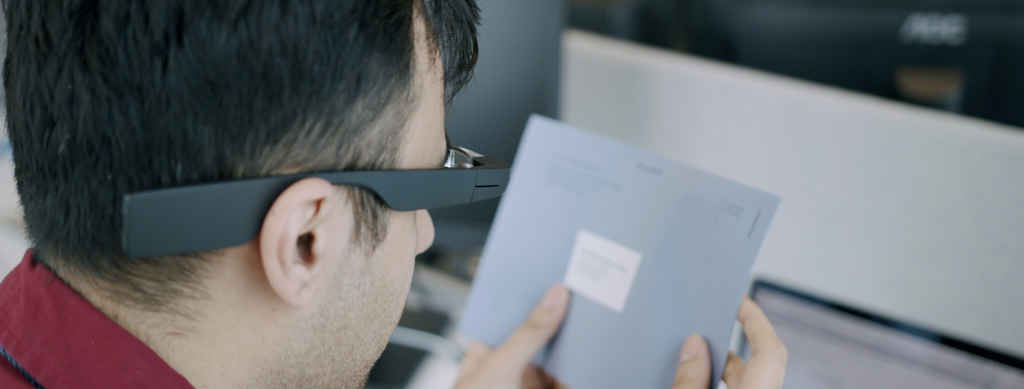Discover Advanced Assistive Gadgets for People With Visual Disabilities
The landscape of assistive technology for people with aesthetic disabilities is evolving rapidly, presenting an array of innovative tools that enhance freedom and interaction. From wise glasses that seamlessly combine aesthetic input with auditory advice to advanced navigating applications that redefine spatial recognition, these tools are improving opportunities.
Smart Glasses Innovations
Smart glasses stand for a substantial innovation in assistive modern technology for people with visual impairments. These innovative devices integrate different functions developed to improve the individual's interaction with their atmosphere. Geared up with sensors and video cameras, smart glasses can capture real-time visual information, which is after that refined and shared to the individual with audio comments or haptic sensations. This functionality allows people to obtain instant descriptions of their environments, improving their ability to engage and navigate with the world.
Furthermore, advancements in artificial knowledge have better improved the capabilities of wise glasses. Artificial intelligence algorithms can recognize faces, checked out text, and determine objects, making them invaluable tools for day-to-day tasks. Customers can get acoustic cues that give context regarding their setting, promoting freedom and confidence.
Furthermore, the ergonomic layout and lightweight nature of many clever glasses make them ideal for prolonged usage, ensuring comfort while boosting functionality. As these tools remain to progress, they hold the possible to revolutionize the method people with visual disabilities experience their day-to-day lives, bridging the space in between accessibility and innovation. The recurring research and advancement in this field assurance to expand the possibilities for wise glasses, making them an important element of contemporary assistive tools.
Navigating Apps and Tools
Various navigating applications and devices have actually emerged as vital sources for people with aesthetic problems, significantly improving their capability to pass through strange settings. These technologies utilize general practitioner functionality, audio hints, and real-time data to provide users with accurate navigation support.
One famous instance is the Aira app, which links individuals to skilled representatives who can offer visual descriptions of environments and navigating advice via an online video clip feed. This service enhances the user's spatial awareness and self-confidence while browsing. One more significant tool is Seeing Eye GPS, which offers voice-guided navigation and sights, enabling customers to accessibility crucial info about their surroundings.

As technology remains to advancement, the growth of much more innovative navigation devices promises to additional empower individuals with aesthetic impairments, promoting seamless wheelchair and integration into varied environments. Such technologies contribute in advertising a more inclusive culture.
Braille Technology Improvements
Recently, developments in Braille technology have significantly changed just how individuals with aesthetic problems accessibility info and involve with the globe around them. The advancement of portable Braille display screens has actually revolutionized analysis by enabling users to attach wirelessly to computer systems, smartphones, and tablet computers. These tools convert message right into Braille in real-time, enabling smooth interaction with electronic content.
In addition, ingenious Braille printers have arised, boosting the production of responsive materials. Modern embossers are quicker and more reliable, permitting the fast creation of Braille papers and instructional materials. This performance reduces the time and price connected with generating Braille sources, making them much more accessible to schools and organizations.
Furthermore, the assimilation of Braille with other innovations, such as man-made knowledge and machine discovering, has actually opened new methods for individualized understanding experiences. Voice recognition and synthesis technologies can match Braille, giving a comprehensive method to info circulation.
As the need for comprehensive education and learning and office environments grows, these technological improvements play an essential function in equipping individuals with visual disabilities, guaranteeing they have equivalent accessibility to info and chances in different elements of life.
Wearable Instruments for Freedom
An expanding variety of wearable gadgets is boosting self-reliance for individuals with visual impairments, offering innovative solutions that improve navigating and day-to-day living. Braille displays and notetakers. These gadgets use sophisticated technologies to provide real-time responses and support, advertising autonomy in different environments
Wearable technology additionally includes smartwatches that can be set with ease of access attributes, allowing customers to get alerts, track their places, or also call for aid with the touch of a button. Additionally, some devices incorporate expert system to evaluate the environment, offering sound summaries of nearby items or people.
Voice-Activated Assistive Solutions
Leveraging voice-activated assistive options has transformed the landscape of assistance for people with visual disabilities, offering hands-free communication and access to a variety of tasks. These modern technologies use natural language handling and my site expert system to make it possible for users to carry out everyday activities with simple voice commands.

Additionally, current developments in voice acknowledgment precision have boosted the customer experience considerably, accommodating varied accents and speech patterns. This inclusivity makes sure that more individuals can take advantage of these innovations, cultivating a greater sense of freedom.
Verdict
In conclusion, the growth of sophisticated assistive devices considerably improves the freedom and lifestyle for individuals with visual disabilities. Innovations such as clever glasses, navigation applications, Braille innovation, wearable gadgets, and voice-activated options collectively promote an even more comprehensive setting. These innovations equip customers to browse their surroundings with confidence and engage more find more info totally with the globe, eventually advertising greater accessibility and equal possibilities for individuals encountering visual challenges.
The landscape of assistive innovation for people with visual problems is progressing swiftly, presenting an array of cutting-edge devices that boost freedom and involvement.Smart glasses stand for a substantial innovation in assistive technology for people with aesthetic problems. As these tools proceed to evolve, they hold the possible to revolutionize the way people with aesthetic impairments experience their daily lives, linking the void between availability and innovation.In current years, advancements in Braille technology have actually dramatically transformed exactly how individuals with visual impairments gain access to information and engage with the world around optometry career salary them. These innovations empower individuals to navigate their surroundings with self-confidence and involve more fully with the globe, ultimately promoting better availability and equivalent opportunities for people facing aesthetic obstacles.